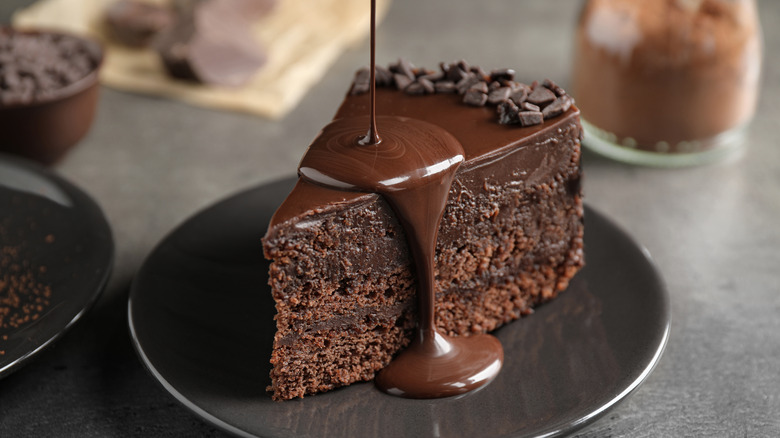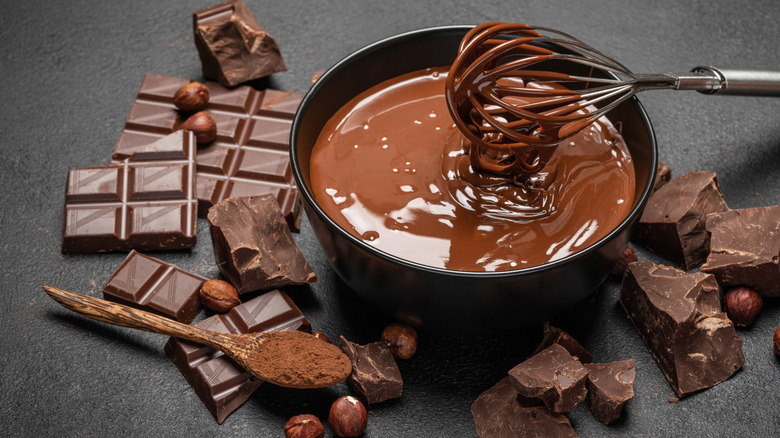Why You Should Avoid 'Quick Temperature Changes' When Baking With Chocolate
At this point, everyone knows the golden rule of baking: use your eggs and butter at the right temperature. Room temperature butter is the key to light, airy, and thick cookies — too soft, and they'll turn into a puddle, according to Epicurious. Cold eggs can split a batter and cakes made from curdled batters are far from the soft and fluffy texture that you want them to be.
What you may not know, though, is that chocolate is equally sensitive to temperature. Take the process of tempering chocolate, for example, the method that gives a bar of chocolate its glossy texture and that delicious snap. Per Epicurious, tempering involves carefully bringing the temperature of melted chocolate up and then cooling it down again in a controlled manner. Chocolate not tempered properly, or some that has been exposed to heat and has re-melted, quickly develops a gray layer called fat bloom, according to Serious Eats. This is also why chocolate should be stored at the right temperature — between 55F and 65F — and away from moisture. The same goes for baking, as well: when working with chocolate, be extra careful with "quick temperature changes," according to Food & Wine.
Chocolate does not like sudden temperature changes
Paris-based Dorchester Collection's pastry chef Elisabeth Hot tells Food & Wine that it's wise to "be very careful with quick temperature changes" when you're working with chocolate in your bakes. If you're trying to make a chocolate cream to pipe onto your cakes and cupcakes for example, Hot says your chocolate and cream are likely not going to be at the same temperature. "The cream and chocolate must reach a similar temperature before mixing," she cautions.
My Recipes adds that adding warm and melted chocolate to a cold ingredient like whipping cream that has come straight out of the refrigerator will only cause the chocolate to harden. Instead, it's best to warm up the liquid that you're adding the chocolate to, and bring both the ingredients up to the same temperature. Alternatively, when working with ingredients that can't be warmed, the site suggests turning the chocolate into a sauce first by slowly mixing liquids like butter and cream into the chocolate over low heat.
You could also bring ingredients like hot melted chocolate and cold cream to a similar temperature by slowly mixing them together little by little to give them time to adjust, per Baking Sense. By lightening the chocolate with a little bit of cream first, the temperature and texture of your chocolate will be much closer to that of the cream, making your end chocolate cream superbly smooth.

